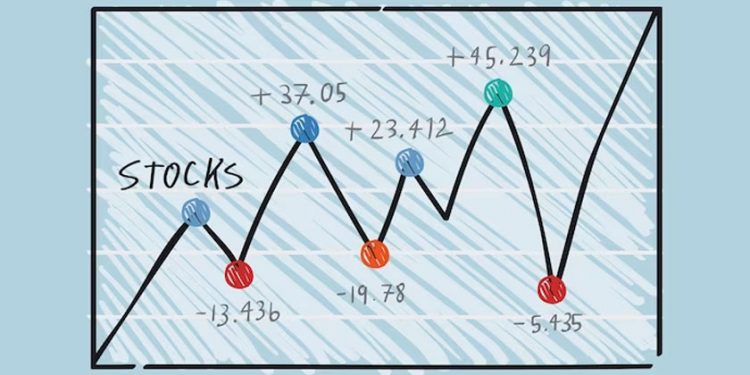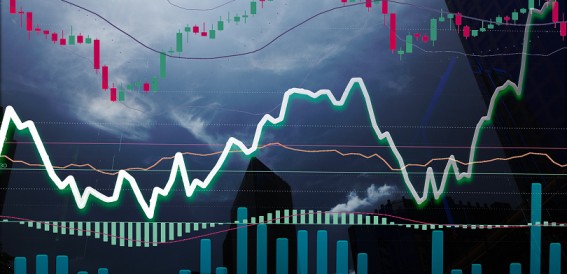- Last Updated: Jul 04,2025 |
- Religare Broking
Understanding the concept of tick size is crucial for successful market participation. Tick size refers to the minimum price increment at which securities can trade. It plays a significant role in stocks, futures, forex, and options trading, impacting trading strategies, market liquidity, and regulatory frameworks. This article aims to provide investors with a comprehensive understanding of tick size and its implications across various trading domains.
- Understanding Tick Size in Stock Trading
- Tick Size in Futures Trading
- Tick Size in Forex Trading
- Tick Size in Options Trading
- Tick Size Regulations
- Tick Size and Technology
- Conclusion
Topics Covered
Understanding Tick Size in Stock Trading
Tick size in stock trading represents the minimum price movement by which stock prices can change. It determines the price increment between "bid" and "ask" quotes. Tick size influences trading strategies by affecting the cost of executing trades, determining order book depth, and impacting the efficiency of price discovery. Traders must consider tick size when determining their entry and exit points.
Tick size plays a crucial role in market liquidity as it affects the ease of trading and the presence of market participants. A narrower tick size can lead to increased liquidity and narrower spreads, promoting a more efficient and competitive market.
Tick Size in Futures Trading
Tick size in futures trading refers to the minimum price movement by which the value of a futures contract can change. It represents the smallest increment at which prices are quoted in the futures market. For example, if the tick size is 0.25, the price can move in increments of 0.25.
Tick size affects margin requirements in futures trading. Smaller tick sizes allow for more precise risk management, as traders can adjust their positions with smaller price movements. On the other hand, larger tick sizes may require traders to allocate more capital for margin requirements, as the potential price fluctuations are greater.
In commodity trading, tick size influences the minimum price change for different commodities. It affects price volatility, contract specifications, and the ability to effectively hedge risks associated with underlying commodities.
Tick Size in Forex Trading
In forex trading, tick size refers to the smallest possible price movement of a currency pair. It represents the precision at which prices are quoted in the forex market.
Tick size impacts forex trading strategies by influencing trade execution costs, stop-loss placement, and profit targets. Traders must consider tick size when determining their risk-reward ratios and overall trading approach.
Tick size affects forex market volatility by determining the magnitude of price fluctuations. Smaller tick sizes can lead to higher volatility, potentially presenting both opportunities and risks for traders.
Tick Size in Options Trading
In options trading, tick size represents the minimum price increment by which the price of an option can change. It determines the precision of option prices and affects the cost of trading options.
Tick size influences options trading strategies by impacting the bid-ask spread, pricing efficiency, and the ability to execute trades at desired prices. Traders must consider tick size when formulating their options trading strategies.
Tick size plays a crucial role in options market liquidity by affecting the ease of trading, the availability of counterparties, and the overall depth of the options market. A narrower tick size can enhance liquidity and attract market participants.
Recommended Read:What is Futures and Options
Tick Size Regulations
The SEC Tick Size Pilot Program was implemented in the United States to evaluate the impact of wider tick sizes on the trading ecosystem. It aimed to enhance market quality, liquidity, and the participation of small-cap stocks.
Various countries have implemented tick size regulations to address market-specific needs and promote fair and orderly trading. These regulations may vary in terms of tick size increments, trading venues, and market segments.
Tick size regulations influence trading costs, liquidity provision, and price efficiency. Careful analysis and assessment of such regulations are necessary to ensure their intended outcomes.
Tick Size and Technology
Tick size has implications for high-frequency trading strategies, as it affects the frequency and profitability of trades executed at small price increments. High-frequency traders must adapt their strategies to the tick size of the traded instrument.
Recommended Read:What is Momentum Trading?
Algorithmic trading systems consider tick size when determining order placement, execution algorithms, and market impact. Tick size affects the profitability and execution quality of algorithmic trading strategies.
Trading platforms must support tick size requirements and provide accurate tick data to enable traders to make informed decisions. They play a crucial role in ensuring a seamless trading experience for participants across various markets.
Conclusion
Understanding tick size is essential for Indian market participants across various trading domains. It influences trading strategies, market liquidity, margin requirements, and regulatory frameworks. By considering tick size and its significance, traders can enhance their decision-making processes and adapt their strategies accordingly. Stay updated with tick size regulations and technological advancements to navigate the evolving landscape of trading successfully.













